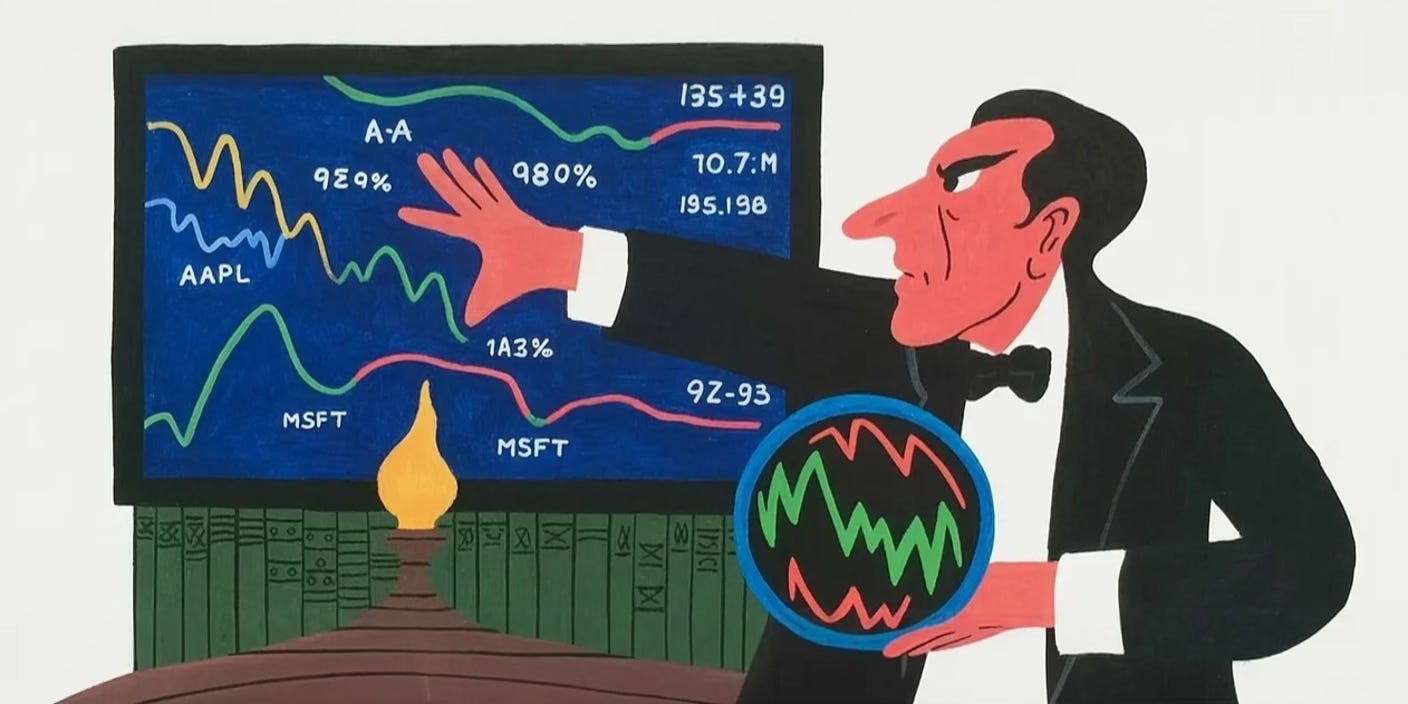The VIX Conspiracy Theory That Doesn't Add Up
Despite constant conspiracy theories, manipulating this index is virtually impossible
The VIX, Wall Street’s “fear gauge,” measures how volatile traders expect the stock market to be. Despite conspiracy theories that occasionally surface, manipulating this index is virtually impossible. Here’s why even the biggest players can’t game the system.
It’s Not Just One Number
The VIX isn’t based on a single stock or even a handful of securities. Instead, it’s calculated from prices across hundreds of different S&P 500 options contracts. Think of it like trying to rig a nationwide opinion poll by influencing every single voter - the sheer scope makes it impractical.
Every option contract that feeds into the VIX has a different strike price and expiration date. To manipulate the index, you’d need to simultaneously move prices on all these different contracts. It’s like trying to control the temperature of an entire ocean by pouring in hot water - the scale is simply too vast.
The Money Required Would Be Astronomical
The S&P 500 options market is one of the largest and most active markets in the world. We’re talking about hundreds of billions of dollars in daily trading volume. To move the VIX meaningfully, a manipulator would need to deploy tens or hundreds of billions of dollars across all these option strikes.
Even if someone had that kind of money, the moment they started buying or selling at artificial prices, thousands of other traders would notice. These traders would immediately take the opposite side of the trade, viewing the distorted prices as free money. It’s like trying to sell $100 bills for $50 - people would line up to buy them from you, quickly exhausting your resources.
The Calculation Method Itself Resists Manipulation
The VIX uses a clever calculation method that makes manipulation even harder. It takes the midpoint between bid and ask prices rather than actual trades, meaning you can’t just execute a few trades at crazy levels to move the index. You’d need to actually move the entire market’s pricing structure.
The index also automatically excludes any options with prices below $5, preventing anyone from using cheap, thinly-traded options to distort the calculation. It’s like a voting system that automatically throws out suspicious ballots - the built-in safeguards make cheating much harder.
Arbitrage Traders Would Sink Any Manipulation Attempt
Here’s where it gets interesting: any successful manipulation attempt would create its own downfall. If someone managed to artificially push the VIX higher or lower, they’d create what traders call an “arbitrage opportunity” - essentially free money for anyone who spots it.
Professional trading firms have sophisticated computer systems constantly scanning for these opportunities. The moment the VIX diverges from its fair value, these systems would trigger massive trades to profit from the discrepancy, automatically pushing prices back to normal. It’s like having thousands of referee robots watching a game, ready to blow the whistle the instant someone breaks the rules.
The Cops Are Watching
The financial regulators - specifically the CFTC and SEC - actively monitor VIX-related trading for signs of manipulation. The exchanges themselves have surveillance systems that flag unusual trading patterns in the options that determine the VIX.
Getting caught manipulating markets isn’t just expensive - it’s criminal. We’re talking about potential jail time, massive fines, and lifetime bans from the financial industry. The risk-reward simply doesn’t make sense, especially given how hard it would be to succeed in the first place.
The Bottom Line
The VIX is like a thermometer measuring the temperature of the entire stock market’s anxiety level. Just as you can’t fake a citywide temperature reading by holding a match under a few thermometers, you can’t manipulate the VIX without moving the entire S&P 500 options market.
The combination of massive scale, prohibitive costs, automatic market corrections, and regulatory oversight makes the VIX one of the most manipulation-resistant financial measures we have. While no system is perfect, the barriers to VIX manipulation are so high that it remains a reliable gauge of market sentiment.
This is why professional investors and institutions trust the VIX as a legitimate measure of expected market volatility.



